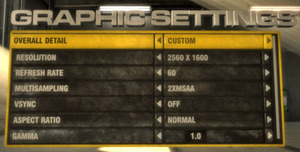Pre-OC Nvidia GeForce GTX 280 and 260
July 19, 2008 | 09:17

Race Driver: GRID
Race Driver: GRID is one of the best racing games to grace the PC in some time, striking a fine balance between automotive simulation and arcade throttle-fest which has resulted in an enormously entertaining game. Players can choose from racing tuned saloons through city streets, through to driving Lamborghinis around Le Mans, with all cars displaying a highly detailed damage model.GRID runs on a modified version of Codemasters' own in house Neon engine, rechristened Ego for GRID. This will also be the engine used in the highly anticipated Operation Flashpoint 2: Dragon Rising, so hopefully GRID will give us a good indication of how hardware will perform in this future title too. Despite only supporting DirectX 9.0c, GRID features a lot of high level graphical features, including motion blur, fantastic smoke effects, dynamic track side details and thousands of fully 3D spectators.
To test performance in GRID, we raced a lap of the "Circuito Di Milano B" track in the RADT Nissan Skyline Z-tune, starting from the back of the GRID (see what I did there) to ensure as many cars on screen for as long as possible. We chose the Milan circuit due to the large amount of dynamic track side details like flags and spectators visible from the track, and for the close proximity of track side objects.
However, GRID does not support Anisotropic Filtering in game, so we had to force this to 16x using the Forceware and Catalyst drivers. We captured the average and minimum frame rates during the lap, and the results you see below are indicative of around one minute and forty seconds of gameplay (average lap time) per setting.
In Race Driver: GRID, it's clear that at low resolution, even with anti aliasing enabled, no card is able to achieve an average result much better than 72/73FPS, with all then GeForce GTX 280 cards and the Radeon HD 4870 delivering almost identical performance. This really does demonstrate the graphics ability of modern cards, where the fact is that at lower resolutions it is now our quad core 3.0GHz processor that is limiting performance!
The Zotac GeForce GTX 260 AMP! also delivered near identical performance to the stock GeForce GTX 260 at low resolution, although once we upped the resolution the advantages of the increased clocks became more apparent, although it was still not enough to beat the Radeon HD 4870 until we enabled anti aliasing at the highest resolution.

MSI MPG Velox 100R Chassis Review
October 14 2021 | 15:04









Want to comment? Please log in.